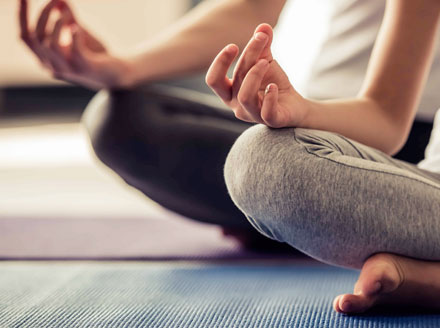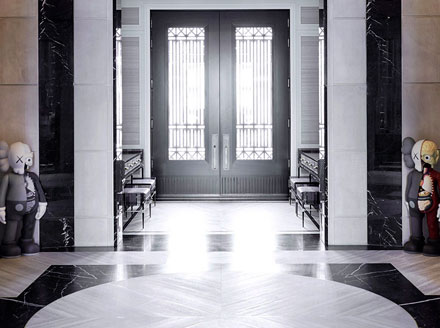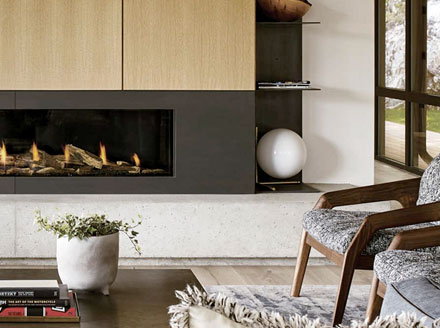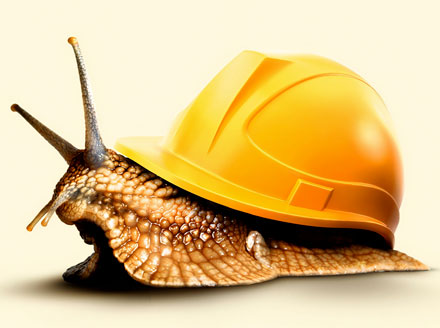Share This Post:
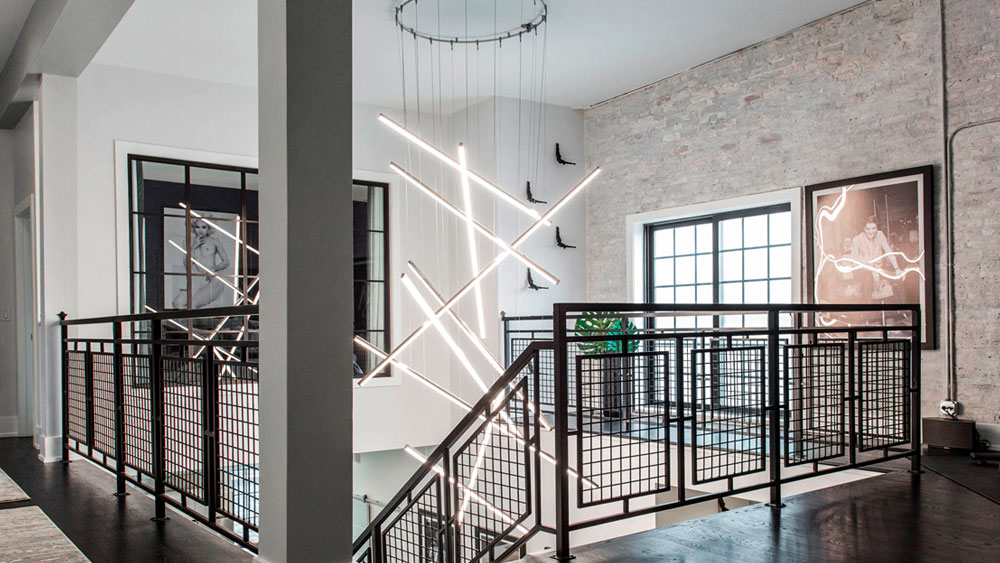
Image Credit: Gregor Kay, For PureEdge Lighting
Foyer Lighting - Balance and Beauty
Beautiful Foyer Lighting
This is post 4 of 4 in the series Making Your Entrance Grand
This is post 4 of 4 in the series
Grand Entrances
INTERIOR DESIGN | Carolyn Feinstein | May 20, 2020
INTERIOR DESIGN | Carolyn Feinstein
May 20, 2020
We previously covered the advantages of choosing the right exterior lighting for the entrance of your house in the article, Exterior Lights Make All The Difference. Now let's carry that inside to the foyer, with a bit more technical information to help make a determination about which lighting is appropriate for the space. There are several approaches to lighting your foyer. Lights in the entryway should be bright enough to greet guests, find your keys, or read a piece of mail. The temperature of the bulbs should be warm and calming.
These factors will affect not only your lighting scheme, (recessed lights, chandeliers, and sconces), but the wattage, quantity, and temperature of the bulbs you use. A 10' x 10', 1-story foyer does not need a chandelier with 30 candelabra bulbs. We're greeting guests, not performing surgery. So here are a few things to consider when designing the lighting for your foyer. I'll explain each in a moment.
- Square footage of the space
- Height of the ceiling
- Windows and sidelights
- Color of the walls and flooring
- Available space for layered lighting
When choosing a light layout and the accompanying fixtures, there are some key terms to keep in mind. A basic understanding of wattage, lumens, foot-candles, and temperature will be useful when considering layered lighting, how many tiers in your chandelier, and the overall quantity of light bulbs.
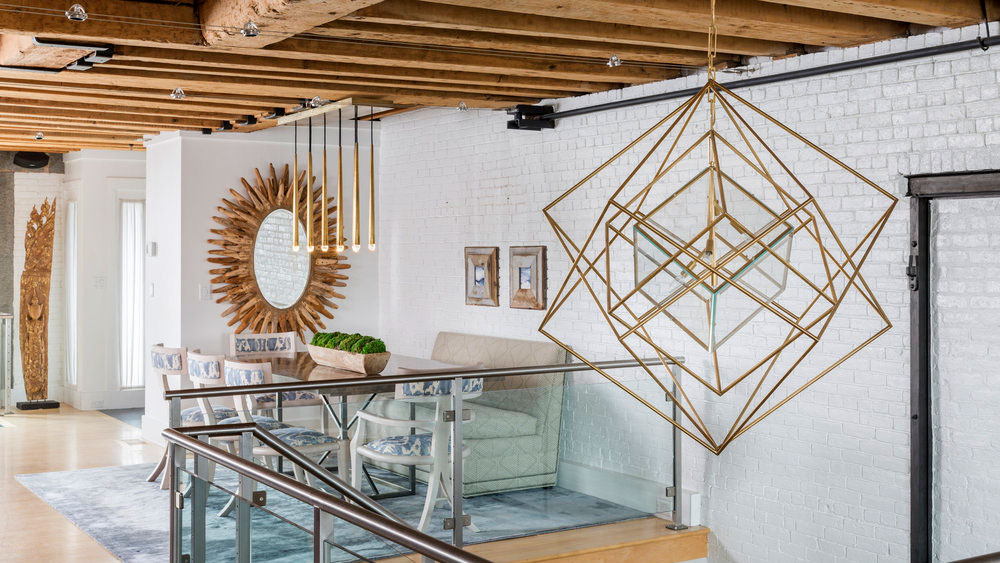
Image Credit: Nicole Farina
Let's start with the most widely known term, wattage. For the purposes of this article, wattage refers to the amount of energy a bulb or fixture will use. It does not tell us how bright the bulb will be or if the placement of the fixture is sufficient to evenly light a dark corner.
Then we have lumens. Lumens are the measurement of total visible light. For example, direct sunlight can be measured at around 10,000 lumens per square foot. If you turn on a 40-watt light bulb, it could be putting out anywhere from 200 to 1,600 lumens (remember, watts = energy use, not visible light). Lumens are great tool to help us figure out the quantity of light bulbs we will need.
And then we have foot-candles. Much like our imperial units of measure, the U.S. has embraced their own non-SI units of measuring light intensity. We always have to be the difficult kid on the playground. You may have also seen illumination measured by lux, the international standard system. The difference here is imperial vs. metric. 1 square foot = measuring point for 1 foot-candle, whereas 1 square meter = measuring point for 1 lux, so 1 foot-candle = 10.764 lux. Ugh. A good way to remember the purpose of a foot-candle is to look at the term itself; How many candles would it take for me to be able to see my feet if I held the candles X feet above the floor?
Foot-candles consider the space the light will be used in, while lumens only consider the amount of light emitted by the source. Wattage, on the other hand, only tells us how much energy will be used. Here you can put that technical knowledge to good use to figure out the following:
- How much energy you want to use (wattage)
- Where you want the fixtures placed (foot-candles)
- The dimensions of the foyer (foot-candles & lumens), and finally
- Which light fixture and bulbs to use (lumens)
All of this information is handy to make sure your preferred light will adequately illuminate your foyer. Just like packing a suitcase, start with the largest item first. In your foyer, that would be the chandelier.
When considering chandeliers for the foyer, size is key. The size and scale of the chandelier need to fit the space. Small chandeliers in large spaces look dwarfed. Linear rooms are often well complemented by long or multiple chandeliers. Ensure the style of the chandelier is in harmony with the furnishing and decor. A heavy, ornate chandelier may prove too much for a room with bold furniture. Quite the opposite proves true though, where a room with minimalist furniture may be begging for a more substantial chandelier.
As mentioned in our list above, the height and placement of the windows and doors should be taken into account when determining the dimension of the chandelier and its finished hanging height. A single story foyer should have roughly 7 feet of clear space from floor to the bottom of the fixture. Higher ceilings, even a 2-story room, should be between 8 and 10 feet from floor to chandelier. Be sure to take a peak from the exterior of the house before finalizing the hanging height. Does it appear too high or low through the windows? Does the light from the interior fixture clash with the exterior? The illumination provided by the foyer chandelier may be magnified by light colored walls and reflective surfaces, like windows. Take this into account when determining the lumen output of the bulbs.
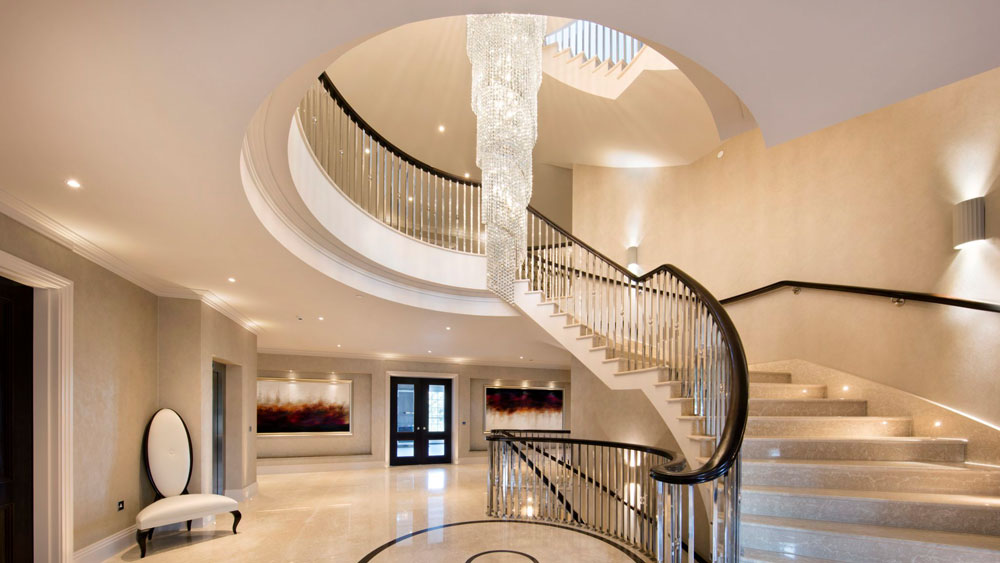
Image Credit: Sarah Ward Interiors
Sconces, as you can see in the photo above, can provide additional foot-candles to places that may need a bit more illumination, such as stairs. Or they can be utilized as an alternative source of light if the chandelier is not turned on. The style should complement the chandelier, but not necessarily be a spot on match. Too many matching elements from the same line can create a showroom look instead of a welcoming home.
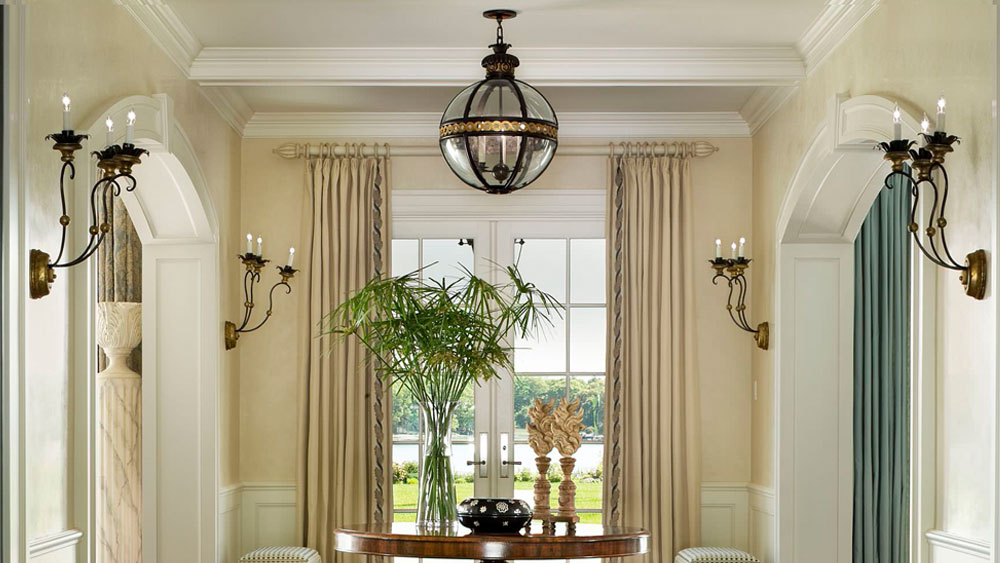
Image Credit: Michael Whaley Interiors, Inc.
There is a true science to lighting design that I respect and appreciate. For the purposes of your foyer, you can make a well-educated and calculated estimate, without engaging the help of professional lighting engineers, that will result in an incredible light scheme. Have fun with it. Look at dimming options and the tools that allow you to automate lighting scenes for guests, dinner parties, and grocery trips, like Noon Home. Light fixtures in the foyer are a huge opportunity to express the personality of your home and set the mood when welcoming your guests.



